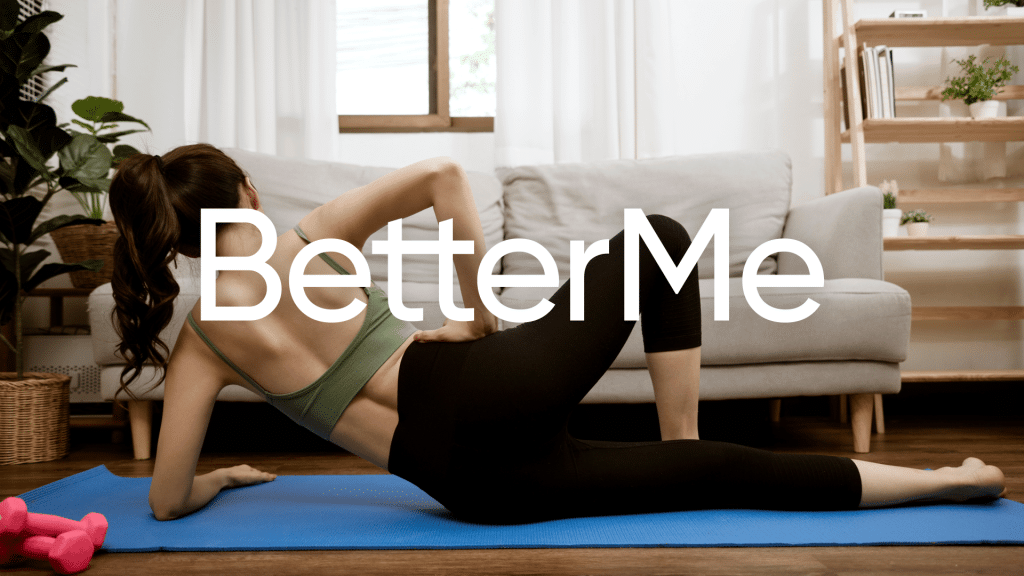When you think of strengthening muscles, you probably think of lifting weights at the gym. After all, your biceps, quads and glutes are some of the most visible—and therefore, coveted—muscles in your body. But there’s another group of muscles that are just as important, albeit much less talked about: your pelvic floor muscles. These muscles support your bladder and bowel, and can help prevent urinary incontinence, fecal incontinence and even manage orgasms. In short, strong pelvic floor muscles are essential for a healthy and enjoyable life. Kegel exercises are the most effective way to strengthen your pelvic floor muscles. These exercises were named after Dr. Arnold Kegel, who developed them in the 1940s, they can be done anytime, anywhere—and no one will even know you’re doing them. Here’s everything you need to know about Kegel exercises: why you should be doing them, how to do them properly and some guidelines for getting the most out of your workouts.
What Are Kegel Exercises?
Arnold Henry Kegel was an American gynecologist who noted the importance of pelvic floor muscle exercises for women during his work in the 1940s. He designed the perineometer— a device used to measure the tension of pelvic floor muscles—and popularized the exercises that bear his name (4).
Kegel exercises are simple clench-and-release exercises that can be done anywhere, at any time. All you need to do is squeeze your pelvic floor muscles and hold for a count of three, then release for a count of three.
You can do Kegel exercises with or without special devices, but many people find them helpful in understanding the correct muscles to target. Biofeedback devices, for example, can help you learn to isolate and contract the correct muscles.
While kegel exercises are often touted as a way to improve sexual functions and prevent urinary incontinence in women, can benefit men as well. Men can use Kegel exercises to lessen urinary continence after prostate surgery, and to treat erectile dysfunction (6).
What Causes Weak Pelvic Floor Muscles In The First Place?
The pelvic floor muscles are a band of muscles that stretch from the tailbone to the pubic bone. They support the organs in the pelvis, including the bladder and bowel.
Pelvic floor muscles can become weak due to (7):
- Pregnancy and vaginal childbirth – the weight of the baby and the stretching of the muscles during delivery can cause the pelvic floor muscles to weaken.
- Being overweight – excess weight puts pressure on the pelvic floor muscles.
- Aging – as we age, our muscles naturally become weaker. Loss of estrogen (menopause) can also contribute to muscle weakness.
- Constipation – straining to have a bowel movement can weaken the pelvic floor muscles.
- Chronic coughing – this can put strain on the pelvic floor muscles, causing them to weaken over time.
- Heavy lifting – repetitively lifting heavy objects can cause the pelvic floor muscles to weaken.
- Jarring exercises – activities such as running or doing jumping jacks can cause the pelvic floor muscles to weaken.
- Surgery – both men and women can experience pelvic floor muscle weakness after surgery, especially if the surgery was in the pelvis or lower abdomen.
- Genetics – some people are born with a higher risk of pelvic floor muscle weakness due to genetics.
The above are just some of the reasons why someone might have weak pelvic floor muscles. If you have any of these risk factors, it’s important to be extra diligent about doing pelvic floor muscle exercises (also called Kegels) to help prevent further weakening of the muscles.
Read More: Male Pelvic Floor Exercises: A Complete Guide To Kegels For Men
How Do You Know If You Have Weak Pelvic Floor Muscles?
There are a few signs and symptoms that may indicate you have weak pelvic floor muscles (7):
- Accidentally passing gas, either during everyday activities or during exercise.
- Passing stool (poop) accidentally, either during everyday activities or during exercise.
- Difficulty starting to urinate or an inability to fully empty your bladder.
- A feeling of not being able to hold in your urine when you sneeze, cough, or laugh.
- A feeling of heaviness in the pelvic area.
- A sense of something falling out of the vagina, especially during exercise.
- Sexual dysfunction, such as decreased sensation during sex or difficulty achieving orgasm.
How Do You Strengthen Pelvic Floor Muscles?
The good news is that you can strengthen your pelvic floor muscles with exercises, just like any other muscle group in your body. Kegel exercises are an effective way to strengthen this area and improve overall health.
Find The Pelvic Floor Muscles
Many men and women struggle to perform kegel exercises because they are not sure how to correctly locate their pelvic floor muscles. Below are some tips to help you find the right muscles to squeeze:
- While urinating, try to stop the stream of urine mid-flow. The muscles you use to do this are your pelvic floor muscles. Doctors caution against doing kegels while urinating on a regular basis, as this can lead to urinary tract infections.
- Imagine you’re trying to stop yourself from passing gas. The muscles you would use to do this are your pelvic floor muscles. A sign that you’ve found the right muscles is that you should feel your anus and testicles/vagina move up when you contract them.
- Women can also try inserting a clean, lubricated finger into the vagina and squeezing the muscles around it as though they were holding urine. If you feel tightness around your finger, you’ve located the right muscles.
- Men can insert a clean, lubricated finger into their anus and squeeze as though they were holding urine. If you feel tightness around your finger while doing this, you’ve located the right muscles.
If you have trouble finding the right muscles to do a kegel, ask for help from a certified pelvic floor physical therapist. There are several ways they can help you determine whether you are doing the exercises correctly and how to improve your technique (4):
- Biofeedback – This is a type of electrical stimulation that can help you find the right muscles to contract.
- Pelvic floor muscle training – This type of therapy uses exercises and other techniques to help you strengthen your pelvic floor muscles.
- Manual palpation – Your therapist will physically feel your pelvic floor muscles to see if they are contracting correctly.
- Electrical stimulation – This type of therapy uses a low-voltage electrical current to help you contract your pelvic floor muscles.
- Special weights – These weights are inserted into the vagina and help you to know if you are correctly contracting your pelvic floor muscles.
There are also several types of devices that can be used to help with kegel exercises. These devices can help you to know if you are correctly contracting your pelvic floor muscles and can also give you feedback on your progress (4):
- Pelvic floor muscle trainers – These devices are inserted into the vagina and help you to know if you are correctly contracting your pelvic floor muscles.
- Vaginal cones – These cones are inserted into the vagina and help you to know if you are correctly contracting your pelvic floor muscles.
- Electrical stimulation devices – These devices use a low-voltage electrical current to help you contract your pelvic floor muscles.
BetterMe app will kick you out of the mental funk, shake off your extra weight, rid you off your energy-zapping habits, and help you sculpt the body of your dreams. Intrigued? Hurry up and change your life for the better!
Perform The Kegel Exercise
These exercises have a 3-step process:
- Squeeze your pelvic floor muscles as if you are stopping the flow of urine mid-stream.
- Hold the contraction for 3 to 5 seconds.
- Relax your muscles for 5 seconds before repeating the exercise. Repeat 10 to 20 times.
As you get better at the exercises, you can hold the contraction for longer and do more repetitions. You should eventually be able to do them anywhere and anytime, whether you are sitting, standing, or lying down.
When you first start doing Kegel exercises, you may only be able to hold the muscles tight for a short time. But with regular practice, you should be able to increase the length of time you can hold the muscles tight and the number of repetitions you can do.
Most people need to do Kegel exercises for at least 3 months before they see any improvement. Don’t get discouraged if you don’t see results right away. Just keep doing them, and you should eventually see a difference.
Kegel Exercises Mistakes To Avoid
When doing Kegel exercises, there are a few mistakes you’ll want to avoid:
- Don’t hold your breath while doing the exercises. You should breathe normally throughout the entire exercise.
- Don’t tighten your stomach, buttock, or thigh muscles while doing the exercises. The only muscle you should be contracting is the pelvic floor muscle.
- Don’t force yourself to urinate during the exercises. Some people think that they need to urinate in order to do the exercises correctly, but this isn’t true. In fact, forcing yourself to urinate can actually lead to urinary incontinence (leakage).
- Don’t overdo it. Like any other type of exercise, it’s possible to overdo it when doing Kegel exercises. If you find yourself getting tired or developing muscle soreness, take a break. It’s also important to follow the 3-second rule (squeezing and holding for 3 seconds) so that you don’t strain your muscles.
- Don’t give up. Kegel exercises may not be easy at first, but they get easier with time and practice. So don’t get discouraged if you’re not seeing results right away. Just keep doing them, and eventually you should start to see a difference.
Read More: Strengthen Pelvic Floor Muscles Without Kegels: 5 Exercises You Can Use
Benefits Of Kegel Exercises
There are several benefits to doing Kegel exercises, including:
Improve Your Bladder Control
If you leak a little urine when you cough, sneeze, or lift something heavy, you’re not alone. Many women experience stress urinary incontinence (SUI) and pelvic floor muscle weakness. Kegel exercises can help tone your pelvic floor muscles, which may give you better bladder control (1).
Improve Sexual Function
Pelvic floor muscle weakness may cause or worsen sexual dysfunction in both men and women (4).
In men, weak pelvic floor muscles can lead to erectile dysfunction and premature ejaculation. In women, it can lead to vaginal dryness, pain during sex, and difficulty reaching orgasm. Kegel exercises may help improve sexual functions by strengthening the pelvic floor muscles (5).
For women, this means increased sensation during sex and improved orgasms (3). For men, Kegels can help with premature ejaculation and erectile dysfunction (5). By strengthening the pelvic floor muscles, you’ll be able to control your orgasm better.
Make Childbirth Easier
Having strong pelvic floor muscles can make labor and delivery easier. These muscles help support your baby during pregnancy and aid in pushing your baby out during delivery. Kegel exercises can also help reduce the risk of perineal tearing during childbirth (2).
Help Heal Prolapse
Pelvic organ prolapse occurs when the pelvic organs (bladder, uterus, or rectum) drop from their normal position and bulge into the vagina (4).
Prolapse is often caused by weak pelvic floor muscles. Kegel exercises can help tone the pelvic floor muscles and improve prolapse. However, they aren’t a cure for prolapse — if you have prolapse, you’ll likely need surgery to repair it (4).
Convenience
All you need to do a Kegel exercise is squeeze your pelvic floor muscles. You can do this anytime, anywhere – while driving, sitting at your desk, or even going for a walk. Just be sure not to do them when you are urinating, as this can actually lead to urinary incontinence.
Lean and toned up body isn’t just a far-fetched fantasy. Check out the BetterMe app and watch it propel your weight loss journey into high gear!
How To Add Kegels To Your Daily Routine
You need to practice Kegel exercises regularly to see results. Try to do them at least 3 times a day. Spread them throughout the day so that you don’t have to do them all at once. The tips below can help you make Kegel exercises a part of your daily routine:
- Do them while you’re doing other activities. You can do Kegel exercises while you’re sitting at your desk, watching TV, or even driving.
- Use a schedule. Decide on a time of day when you will do your Kegel exercises, and then stick to it. For example, you could do them first thing in the morning, during your lunch break, and before bedtime.
- Use a reminder. Place a note in your purse or wallet, or set an alarm on your phone to remind you to do your Kegel exercises.
- Keep track of your progress. Use a notebook or computer to track how often you’re doing the exercises and how long you can hold the contraction. This will help you stay motivated as you see your progress over time.
- Try holding the contraction for shorter periods of time at first. As you get better at the exercises, you can gradually increase the amount of time you hold the contraction.
- Talk to your doctor. If you’re having trouble doing the exercises or you’re not seeing any results after several weeks, talk to your doctor. He or she can give you some tips on how to do the exercises correctly and may be able to refer you to a physical therapist who can help you with the exercises.
The Bottom Line
Kegel exercises are a great way to strengthen the pelvic floor muscles. These muscles support the bladder and help control urination. They also play a role in sexual function. Kegel exercises can be done anytime, anywhere, and don’t require any special equipment. Be sure to practice them regularly to see results.
Get your personalized
meal plan!
DISCLAIMER:
This article is intended for general informational purposes only and does not serve to address individual circumstances. It is not a substitute for professional advice or help and should not be relied on for making any kind of decision-making. Any action taken as a direct or indirect result of the information in this article is entirely at your own risk and is your sole responsibility.
BetterMe, its content staff, and its medical advisors accept no responsibility for inaccuracies, errors, misstatements, inconsistencies, or omissions and specifically disclaim any liability, loss or risk, personal, professional or otherwise, which may be incurred as a consequence, directly or indirectly, of the use and/or application of any content.
You should always seek the advice of your physician or other qualified health provider with any questions you may have regarding a medical condition or your specific situation. Never disregard professional medical advice or delay seeking it because of BetterMe content. If you suspect or think you may have a medical emergency, call your doctor.
SOURCES:
- Effectiveness of supervised Kegel exercises using bio-feedback versus unsupervised Kegel exercises on stress urinary incontinence: a quasi-experimental study (2022, nih.gov)
- Effects of Prenatal Perineal Massage and Kegel Exercises on the Integrity of Postnatal Perine (2015, scirp.org)
- Effects of Sex Education and Kegel Exercises on the Sexual Function of Postmenopausal Women: A Randomized Clinical Trial (2017, pubmed.gob)
- Kegel Exercises (2022, nih.gov)
- Kegel Exercises (Pelvic Floor Exercises) (2020, clevelandclinic.org)
- Kegel exercises for men: Understand the benefits (2022, mayoclinic.org)
- Pelvic floor (n.d., betterhealth.vic.gov.au)












